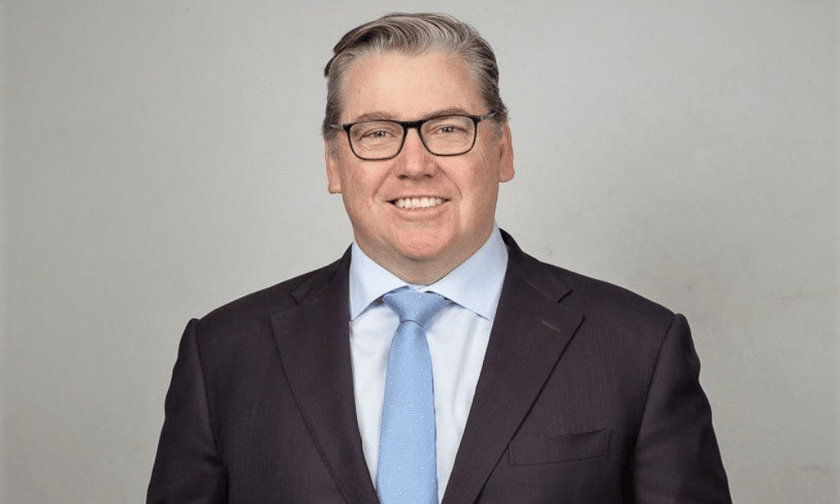

It’s just over two years since Jarrod Hill (pictured above), took over the leadership role of IAG’s intermediated insurance business across Australia.
The CEO of CGU and WFI, according to IAG’s financial reports, has seen that business go from a AU$103 million loss in FY22, to a AU$209 million profit in FY23.
“We’ve made really good progress,” said Hill to Insurance Business. However, he acknowledged that IAG is “not at the end of that journey by any stretch of the imagination.”
He cited improved portfolio management as key to the profits turnaround.
“We’re really clear on the appetite and the business we want, we’re clear on product lines that we want to grow, where we’re going to take a more circumspect view of writing business,” said Hill.
The CEO said this allows IAG to shape a portfolio and deliver “the underwriting result that we want and the bottom line profit” and manage risks and volatility.
IB asked Hill, in light of steep rises in all insurers’ premiums, how much of IAG’s FY23 profits can actually be attributed to improved portfolio management?
“It’s [from] a mixture across the whole flow and it is hard to separate it out,” he said. “We know that there’s business or segments, that we’re not writing now, that would have continued to lose money and that would have eroded the profit margin that we delivered.”
He said “obtaining rate to offset the increasing claims costs has really helped us.”
However, Hill also said a portion of profit has come from “the clear risk decisions we’ve made.”
He said there are also clear differences between how IAG underwrites business in the intermediated space today, compared to two years ago.
“Two years ago we were a very generalist underwriter across most areas of business, trying to price them and accept risk and write all risk,” said Hill. “Now, we’re very clear and we’ve segmented our portfolio.”
The CEO said this enables his insurance firm to better understand where more profitable business is likely and where the business is “challenged.”
“Now we have very different rate that we look to achieve depending on that segment,” said Hill. “For the very profitable business that means far less rate.”
He said IAG can now tier rate increases to sub-segment performance. Hill said this “deep granular understanding of portfolio” is a big shift.
“That’s a significant shift in our core underwriting,” said Hill. “On pricing as well, our ability to price at a granular level now is huge.”
He said IAG has launched a new pricing tool across New Zealand and Australia.
“So we’re delivering a much fairer price and a much more accurate price to all of our customers,” said Hill. “We’ve done that across our rural farm pack business, but we’ve also delivered a new pricing tool in our liability business.”
IB asked if this improved pricing capability is good for customers, or investors, or both? For example, are some of IAG’s rural customers across Australasia seeing their premiums fall because of this?
“There have been very few where we’ve seen any rate reductions,” said Hill. “But we are angling the amount of rate against the risk, so I would say it’s fair from a risk perspective.”
He said, despite the ongoing challenge of claims inflation, those with a lower risk are paying a lower price proportionally than those with a higher risk.
“We think that’s fair for our customers and our clients and we do feel it’s obviously, much better for our shareholders and our investors because we should be really clear about how we deliver long term profitability across the portfolio,” he said.
IB asked for more detail about which industry sectors IAG has pulled out of because they were regarded as too risky and, in contrast, where is IAG seeing insurance opportunities?
“I’d prefer not to get too granular on that because then you’re giving away the secret sauce to the competitors,” said Hill.
He said in some industries it wasn’t about the risks themselves but more about how they structured those deals.
“If you remember, we exited IAL, the Steadfast personal lines,” said Hill. “That personal lines business in itself was OK, but it’s the way we’d structured it, the digital pricing that we put into that made that not profitable.”
He said IAG has become very focused, not so much on products, but on segments of products. For example, in the liability class of business.
“What we are seeing is a real uptick in injury to worker claims, the frequency of those, and also the quantum that we’re starting to see,” he said. “We’re also seeing that drop down into more small- and medium-sized customers, where historically we’d see that more at the larger end of town from a customer basis.
He said secondary psychological claims under liability claims are also going up.
“They’re the things that we’re managing,” he said. “It doesn’t mean that we’re stepping away.”
Where is your insurance business seeing opportunities? Please tell us below
